I managed to cram in a lot of aviation adventures before I got my pilot’s license.
There are many ways to go about earning your private pilot certificate. I didn’t go for mine until I had nearly 1,000 hours of flying time. Since my husband let me fly most of the time we were in the air together, I didn’t bother, frankly. If I had it to do over again, I wouldn’t repeat this method, since all that time is unloggable. And there’s no substitute for the freedom of being able to take the airplane up for a solo flight, at least periodically. But I managed to cram in a lot of aviation adventures before I even had my pilot’s license. Here are a few.
Being Mistaken For Drug Runners
We first began flying together in early 1995, in a rented Skyhawk. Soon our norm became that my husband, in the left seat, would take off and begin the climb. After a few minutes, he’d hand the plane to me and I’d fly, handle the radios, and navigate, only asking for help if I needed it. I would start the descent, but he would take over soon thereafter and finish the flight.
One day we thought it would be fun to take the airplane out to Amboy, in California’s Mojave Desert, to show our kids the trilobite fossils there. We called the FSDO to ask if we could land on a desert road, and they gave us the OK, so long as we didn’t create any traffic hazards (it’s BLM land). So, remaining below the MOA and out of the Restricted Areas, we lined up on an old part dirt/part paved road (remember, my husband at this time performed all takeoffs and landings, approaches and departures). Just before touchdown, a major dip appeared one that would have caused an accident for sure. A blast of power carried us over the dip and we were down safely. That showed me how, even when you’ve “dragged the strip” to look for obstructions, lighting conditions can hide dips, holes, and ruts until you’re almost upon them. We pushed the plane off the road and hiked the half-mile to the old volcano.
A few hours later we heard a helicopter and saw it land near the airplane. We’d had enough anyway, so we walked back toward the Cessna. About halfway back, we met a local deputy sheriff walking toward us. With his red hair and mustache, he resembled Yosemite Sam, except this guy was as tough as they come. “Hello, Mr. Worthy—find any fossils?” was his greeting. He had driven in after the helicopter spotted the aircraft on the ground, opened its unlocked door, located my husband’s Day Runner, and seen our plan. “I thought I was going to find bags of cocaine and get a big promotion, but all I found were stuffed toys and remote-controlled cars,” he continued. We weren’t upset that he looked through our stuff; after all, a plane in the desert like that would usually indicate either an emergency or an illegal drug operation. And he wasn’t upset with us. He goofed around a bit with the kids and then helped us push the plane back to the old road. We offered to give him a ride. “No way, I’m not gettin’ in that thing!” was the response. Soon we were on our way.
Playing Both Sides of the Radio Call
Another time, we flew a rented Cherokee to Kern Valley (L05) and rafted the Kern River. Before departing Kern Valley for home, we asked for a good fly-in eatery. That’s when we found out about Harris Ranch (3O8), a 2,800-foot private airstrip right beside Interstate 5, about halfway between L.A. and San Francisco. The steakhouse was excellent, and Harris Ranch became a regular stop. Once, on our way in from Monterey, we tuned in the Unicom about 20 miles out. Someone was on freq, making auto-reports of his location. He had a strong Asian accent, and as we listened, the reports became more and more odd: “Harris Ranch Air Traffic, N1234, inbound from the south, slowing to 250 indicated….the Captain has turned on the seatbelt sign, please remain in your seats….flight attendants prepare for landing….N1234 cleared for landing Runway 36, caution wake turbulence….contact Ground point-niner….” What??? I’m telling you, this little untowered strip is in the middle of nowhere. We had our eyes peeled for something big but never saw it. As we landed and taxied off the runway, a Cessna 150 was the lone aircraft on the ramp. A young man leaned against the plane, smoking a cigarette. We decided he was a student pilot, practicing both sides of the mike. Who knows—maybe he’s a pilot for JAL now….
The First Trip in Our Cessna 210
After the Skyhawks and the Cherokee, we joined a club and became part-owners, with many other people, of a Cessna 182. We flew up the California coast and all over the West this way, hiking and exploring from the redwoods to the red rock deserts of Utah. By April of 1997, we bought our own plane at last: a 1973 Cessna 210L.
The first thing we did was have it repainted, put in a new interior, and a new panel, so it was June before the plane was finished. On our first flight, we took the three kids on a flight through the L.A. Basin. The new CD player was blasting for them in back, and all the lights were on (it was a very smoggy day). We suddenly noticed the controller’s voice breaking up. We transmitted back but got no response. Within about a minute, everything electrical was dead. The alternator had quit and the lights and gizmos sucked what little juice was left in the battery right out. (Pre-purchase inspection missed the bad battery). We were NORDO in congested airspace. I quickly learned it’s 70 hand-cranks to get the gear down, and it gets rather difficult toward the end because of resistance from the outside air against the gear doors (I recommend anyone with a retractable practice hand-cranking their gear before they have to do it for real). We landed at Brackett Field after circling once. They figured out we were NORDO as we waggled the wings, and gave us light signals.
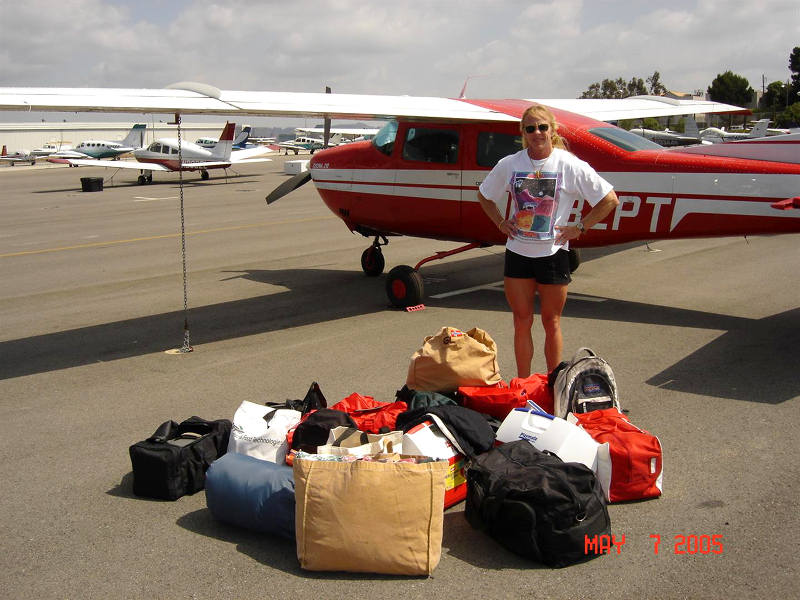
Two weeks and a new alternator and battery later, we departed for our first family trip in our plane, a 17-day clockwise tour of the country. From SoCal up to NorCal for a new custom wood panel, and then the Ogden, Utah rodeo, a fuel stop beside a Nebraska cornfield, an overnight in Indianapolis, and on to Baltimore where we explored the harbor and spent several days in Washington, D.C. Then it was down to Disney World in Orlando, just as Hurricane Danny was finally clearing out. We picked our way through the last lingering rain shafts and then practically had Disney World to ourselves for two days. Next, we visited family and caught fireflies in Alabama, toured New Orleans, explored the amazing Carlsbad Caverns in New Mexico, stopped for lunch in Laughlin, Nevada, and on home to Santa Monica, five people, and baggage for 17 days all no problem in this capable aircraft.
And that was just the first trip.
Borrowing a Brand New Car
Over the years we made numerous long cross-country trips and I saw every kind of weather, worked the radios, and navigated. One day, flying home from Calgary, Canada, we encountered a lot of thunderstorm activity over the Nevada desert. We diverted toward northern California, but more clouds kept popping up. We decided to call it quits and land. Unfortunately, there was no one at the airport, and no phone (this was before most people had cell phones). Just then, a pair of men pulled up in a Suburban. One of them jumped out. He was just stopping by with his buddy to pick up something in his hangar. When he saw our predicament, he pointed inside his hangar, where a brand new Cadillac Escalade was parked beside his Bonanza. He flipped us the keys. “Here, take my car. There’s a restaurant and hotel a few miles down the road. Tomorrow when you come back, just slip my keys under my hangar door here and then you can fly home.” He’d never met us and barely knew our names, and yet he loaned us his expensive car!
An Emergency Landing, and Being Mistaken For Drug Runners, Part 2
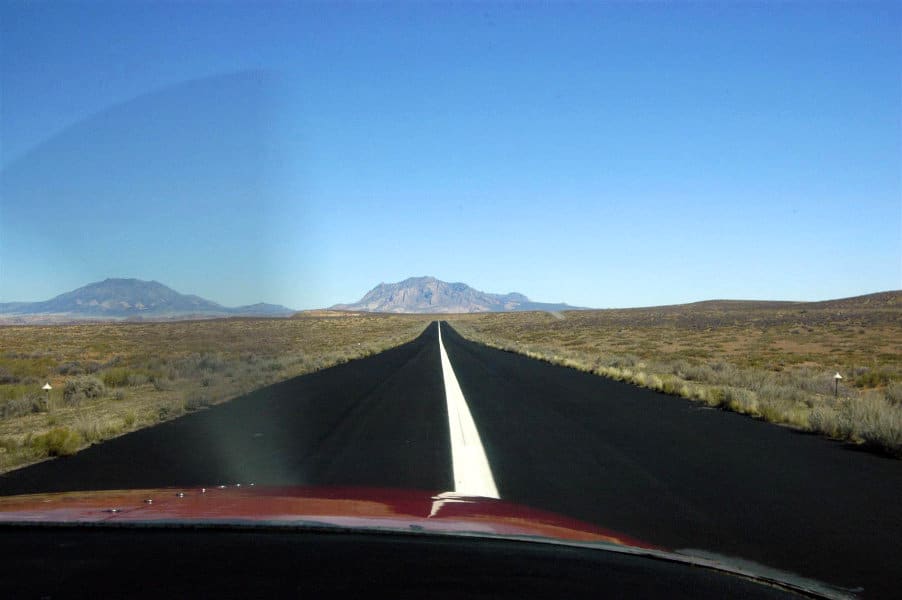
We used to have a share in a houseboat on Lake Powell, east of the Grand Canyon. We’d fly out to Bullfrog Basin (U07), a small airport near a marina about halfway up the long reservoir, and leave our plane there for a week each spring and fall as we used the boat to access the reservoir’s numerous side canyons, where we would hike and never see another person. In October of 2000 the weather was perfect as usual, until the day of our departure. A big rainstorm came in and things were looking worse by the minute. After unloading the boat we used a phone at the marina to call for a weather briefing. Beginning west of the lake, clouds along our route back to Santa Monica (SMO) basically went from almost ground level to far above our aircraft’s service ceiling, with temps aloft below freezing and icing likely. So we packed up the plane and bumped our way under the clouds west to Page (PGA), the larger airport near the dam, which has a town with motels and restaurants.
Once at our hotel, we did what pilots usually do when stuck in weather: turn on the Weather Channel (remember, this is before iPads, ForeFlight, and all the internet weather tools we now enjoy). Well, the storm didn’t move out but became a cutoff low, and delivered the last big deluge before the onset of the now 15-year drought the Southwest is experiencing. We visited the Powell Museum, hit baseballs in the batting cages, and tried not to go stir crazy for three days of what we considered unflyable weather. Our kids, at home with their grandmother, wanted us home. On the fourth day the briefer had good news: the ceiling was about 2,000 feet AGL all the way to around Lake Mead, after which the weather would steadily improve to clearing skies over the Los Angeles Basin.
We launched under leaden skies with occasional rain showers but plenty of space between the terrain and the ceiling. But by the time we reached Lake Mead, the ceiling was dropping and it looked solid up ahead. We hooked left to land at Grand Canyon West (1G4), on the Hualapai Reservation. There, one of the helicopter pilots said, “Yeah, the weather just tanked and we had to cancel all our scenic flights again today. I thought we were finally going to get out.” On the phone, however, the briefer assured us that conditions would improve in 90 minutes. Sure enough, they did, and we launched again. By the time we overflew Searchlight (1L3), it was pouring, but with good visibility. Still, I started closely watching the roads (my husband was flying). Slowly the clouds were forcing us lower until we were only about 200 feet above the ground. Below us, about halfway between Needles and Barstow, was uninhabited desert.
And then it happened: right in front of us, the clouds simply materialized, the way people do on Star Trek when they get beamed down to a planet. It took about three seconds to comprehend the sight, kind of like what you read about, that it takes several seconds to really believe that your engine has quit. My husband said, “I’m turning around,” and began a 180, but we entered the clouds anyway. A turn that close to the ground in IMC is not a happy moment. But we popped out again after we were turned around, still in level flight, and I said, “There’s a long road up ahead just a couple of miles. I watched it as we went over and didn’t see any wires or signs.” The road appeared, and he landed on it just like a long runway. Not a car or any sign of humanity was in sight. We turned around and taxied back to a lone intersection, turned right, and then spun around to face the long road again, but with the aircraft off the road. And then shut down.
Using our cell phone, which miraculously had a signal, we called a briefer, who again insisted the weather would significantly improve in 90 minutes, and continue to blue skies as we progressed west. So we waited, with rain drumming lightly on the roof of the plane. After half an hour, we watched as a single pickup truck approached on the long road (we could see it from a mile away) and turned right. He stopped abeam the plane and looked at us. Slowly he put up his thumb as if to ask, “Are you OK?” With big smiles, we nodded and gave him the thumbs up, and he slowly continued up the road behind us.
About 20 minutes later as we sat idly staring ahead, two large, dark-green SUVs suddenly appeared from behind at high speed. They then slammed on their brakes and spun the vehicles around like in an action movie. Four National Park Rangers jumped out of the vehicles with guns drawn. Our hands immediately shot up and we kept them there. They motioned for us to keep our hand up and then walked up, glancing first at us and then into the back of the airplane, which had pillows, empty coolers, and duffel bags. One of them ordered my husband to bring one arm down and open the door, which he did. Then the ranger demanded, “What are you doing here?” We explained that we were fine but had made an emergency landing due to weather and were waiting for it to clear. “You can’t land here, it’s illegal. You’re inside Mojave National Preserve.” And indeed we were, which we had forgotten about. After running our IDs and finding nothing, they called the FAA. We didn’t hear the conversation, but after they hung up, their demeanors changed from highly aggressive to very friendly, much to our relief. We asked what they had said.
The person from the FAA asked:
–Is anyone in the aircraft killed or injured? –No.
–Is anyone on the ground killed or injured? –No.
–Is the aircraft damaged? –No.
–Is there any damage to property on the ground? –No.
–Is the weather bad? –Yes.
–Is the aircraft causing a traffic hazard in its current postion? –No.
–When the weather improves, are traffic conditions such that the aircraft could be expected to make a safe takeoff? –Yes.
–Well then, although aircraft are generally prohibited from landing in National Parks or Preserves, it is legal to land during an emergency, and, given the circumstances, it sounds justified. Just let them sit there if you deem it safe, and let them take off when the weather clears.
That was it. They didn’t even want to talk to us. We never had to fill out a report. And as for the rangers, when they first arrived, they were prepared to find a drug deal in progress. The pickup had reported seeing an airplane with two people in it, just sitting in the desert. Considering the kinds of weapons that often accompany drug transfers, and the epidemic of crystal meth trafficking going on at that time, their actions seemed justified to me. So now that they knew they didn’t have to arrest us for drug trafficking or even landing in the Preserve, they were very friendly. They smiled, joked, answered our questions, took photos of themselves with the airplane, and gave us water. Before they left, one of them promised to swing by on his way home, to take us to a motel if we weren’t able to take off. And then they drove away. About an hour later the clouds had not only lifted, we could see the system was finally breaking up. We took off uneventfully and headed home into ever-clearing skies.
Finally Deciding to Get My Pilot’s License
One night I dreamed about taking the airplane for a solo flight. I got into the left seat with the key in my hand. And then I was stumped: after nearly 1,000 hours in the right seat, I didn’t know how to start the engine! My dream ended and I woke up. The next day, we switched seats and I learned how to start the engine and taxi (I really hadn’t been doing that either). Taking off wasn’t difficult. But on final to land, my husband said I wasn’t lined up with the center of the runway. This happened each time. He got frustrated. “Can’t you see you’re off? Look: line up with the rivets in the center of the cowling.” “What rivets?” I replied. “I can’t see the cowling at all and I have the seat up all the way!” He looked over at me, noted the height of my eyes, and then scrunched down in his seat to equal my height. “Well that’s the problem; you can’t see anything! We’ll have to get you a pillow.” I’m not short, but short-waisted, and had never seen over the cowling before, and thought that was normal. Indeed, I was used to mostly looking at the instruments, except when I looked up to search for traffic. We got a pair of folded towels and that solved the problem. Such a dumb thing: what else was I doing wrong? That’s when I decided to take lessons and get my pilot’s license.
I began flight lessons with a head start since I already knew how to navigate, use the radios, and handle the aircraft in cruise. So we focused on takeoffs and landings, and then undoing some bad habits, like not looking out enough. On the other hand, flying under the hood or in actual IMC was easy, since I was already used to referring to the instruments. Finally! I could take the plane out on my own.
Flying The Shorline Near Santa Monica
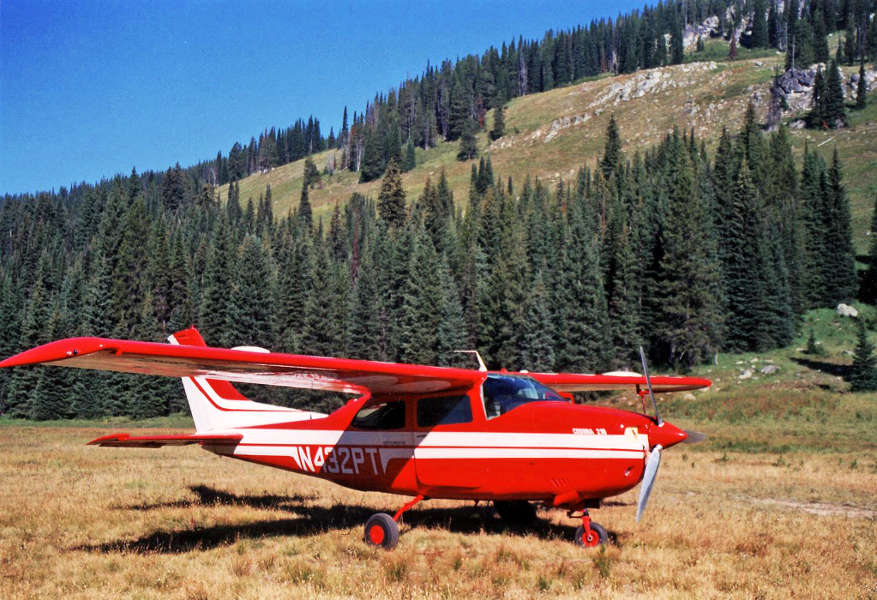
When I think of the most fun flying ever, winding inside the canyons of the Idaho backcountry with my husband or friends is near the top. Perhaps even more fun though was a short flight I did alone occasionally, back when we lived in Santa Monica: take off and head out over the shoreline. Follow the shoreline up toward Malibu and then descend offshore at high speed to right above the water. Of course, if the engine quit, well, I’d be in the water rapidly. And there was always the possibility of hitting a seagull or pelican.
But winging out over the ocean, 10 feet over the waves, is just too much fun. Then I’d climb up to several thousand feet, turn around, and head back to the airport. In contact with the tower, I’d descend toward the airport at high speed and then pull the power and level off. That boxcar of a plane would slow down so fast that within a few seconds I’d be at 160 (MIAS) and could start to put in a bit of flaps. The plane would slow down so fast you’d strain against the shoulder harness as if you were braking. Next, drop the gear, ask for a short approach, and just let the bottom drop out as you slipped it down in a curving descent, pop in the rest of the flaps (we had a STOL kit), land, and get off on the first taxiway. Now, that was freedom. (And probably good practice in case I ever needed to get on the ground quickly, as with an in-flight fire).
Have a Blast at Your Next BFR – Add a Seaplane Rating!
 As Managing Editor of Pilot Getaways magazine and Editor of Idaho Aviation Association’s The Flyline, I see it over and over again—people just love seaplanes and float planes. Each time I post a gorgeous shot of a floatplane in Alaska, Montana, or Florida on one of the Facebook pages I administer, the “people reached” number goes through the roof. Why? It’s a combination of factors you don’t get anywhere else in aviation: you get to fly a small airplane onto a body of water, usually in a spectacular setting. [Click to read more…]
As Managing Editor of Pilot Getaways magazine and Editor of Idaho Aviation Association’s The Flyline, I see it over and over again—people just love seaplanes and float planes. Each time I post a gorgeous shot of a floatplane in Alaska, Montana, or Florida on one of the Facebook pages I administer, the “people reached” number goes through the roof. Why? It’s a combination of factors you don’t get anywhere else in aviation: you get to fly a small airplane onto a body of water, usually in a spectacular setting. [Click to read more…]
My other favorite flying moments were in Alaska, at Alaska Float Ratings. I’d take off, and at 100 feet above the water, the CFI behind me would pull the Super Cub’s power to idle. I’d have to immediately push it over to prevent a stall, and keep the stick forward even as the water seemed to be rushing up to meet us. Then pull back to flare, set it down gently, full power, take off again, and repeat. We would do this at least ten times in a row. They call it the Roller Coaster. It’s a great exercise to burn the motions into your brain, but it’s also a blast.
That’s what flying is to me: pure fun. Anytime I get into an airplane, I’m happy, left seat, right seat—even in the back seat of a friend’s plane. We’re usually going somewhere new. It’s always an adventure, and I feel very lucky.






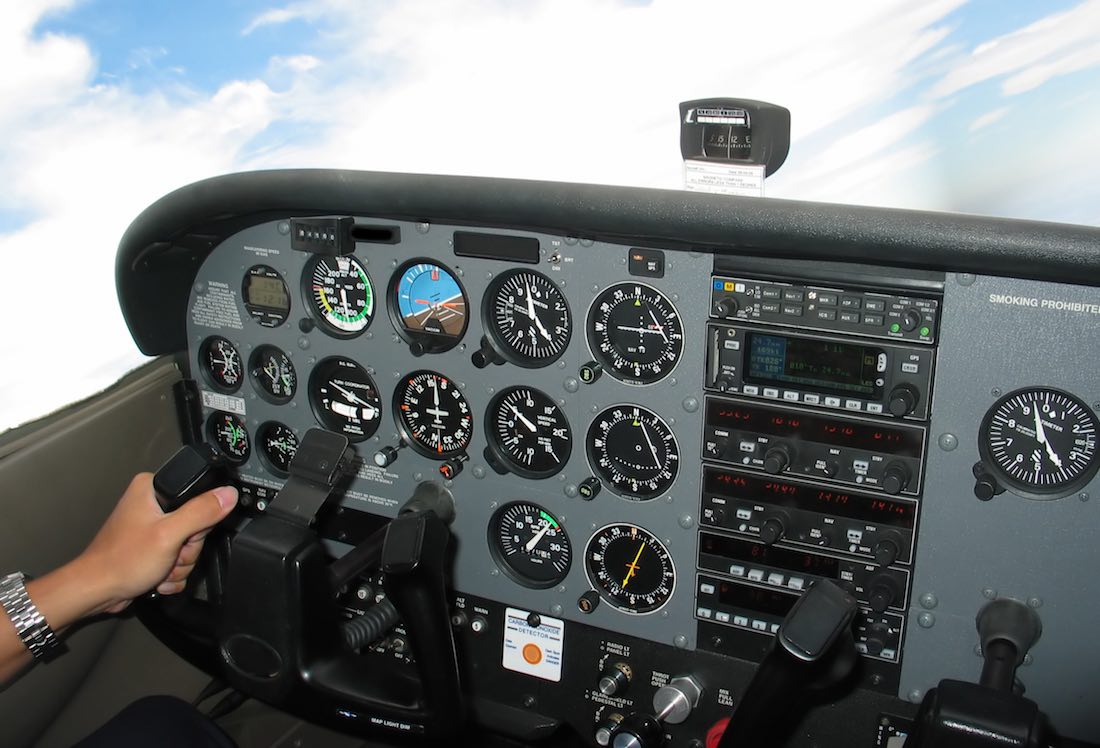






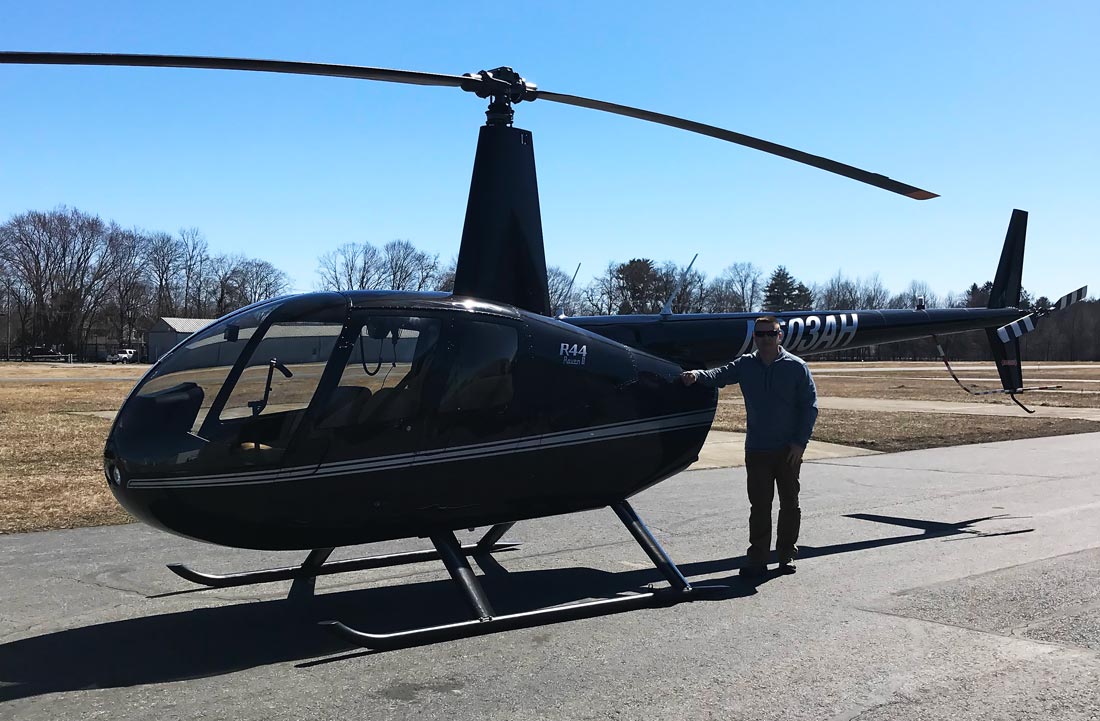

Leave a Reply